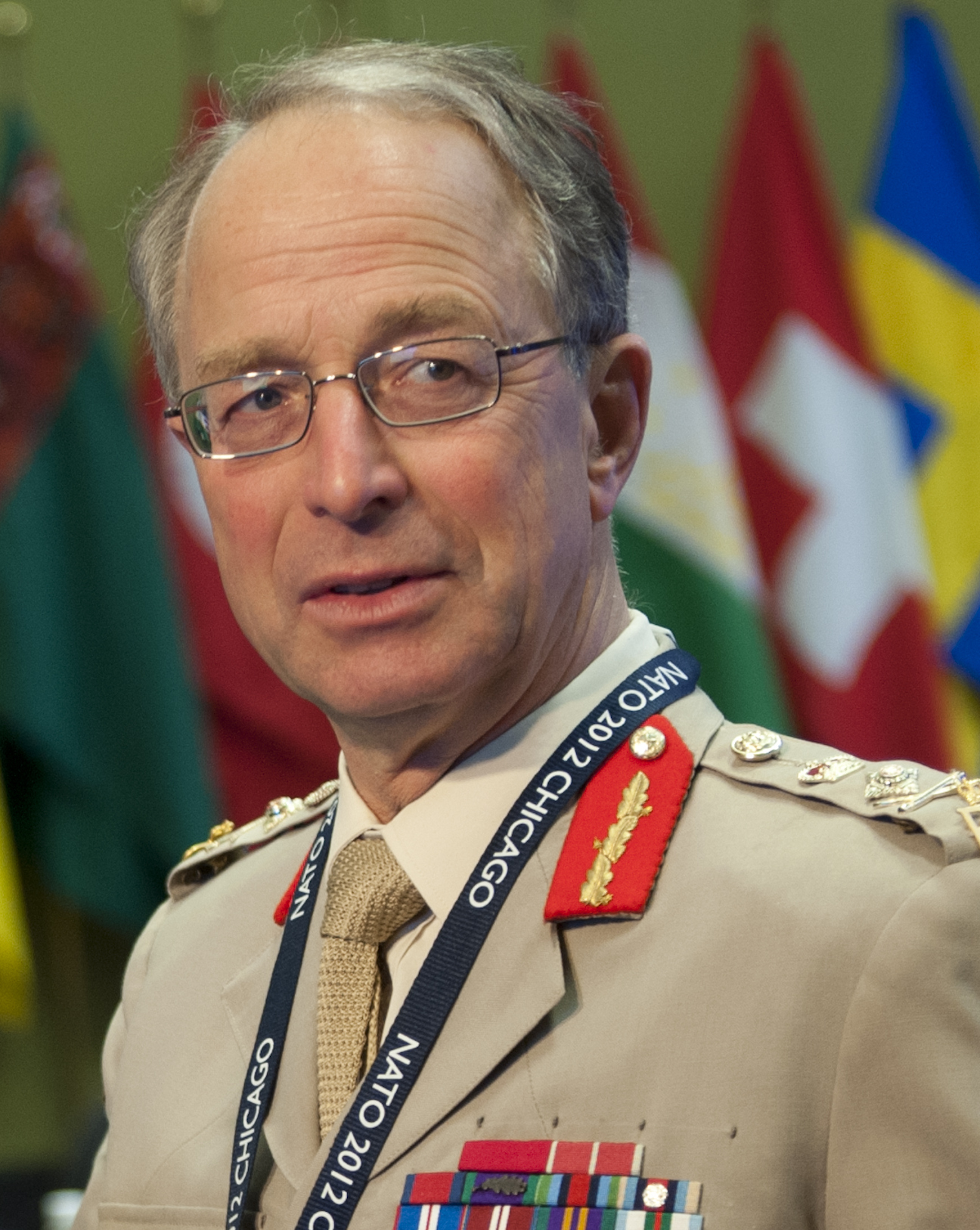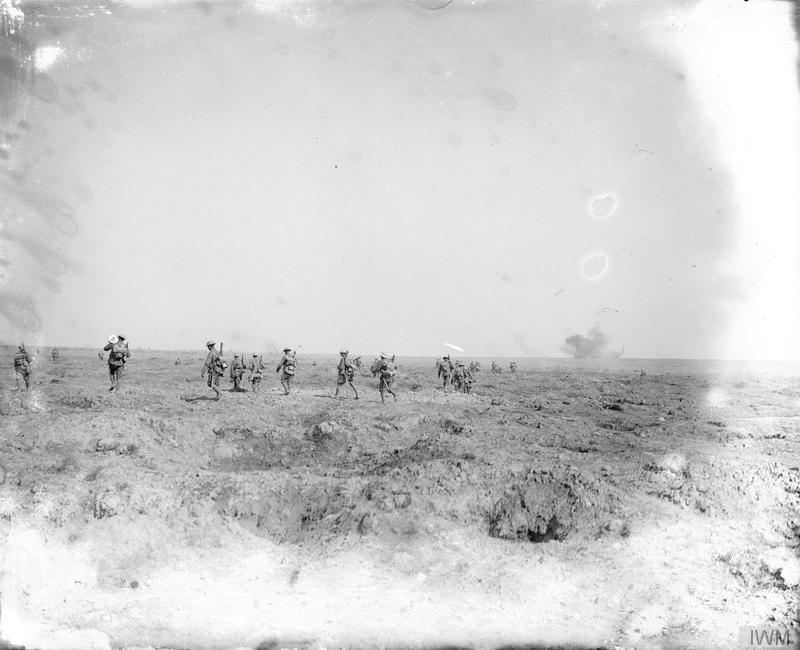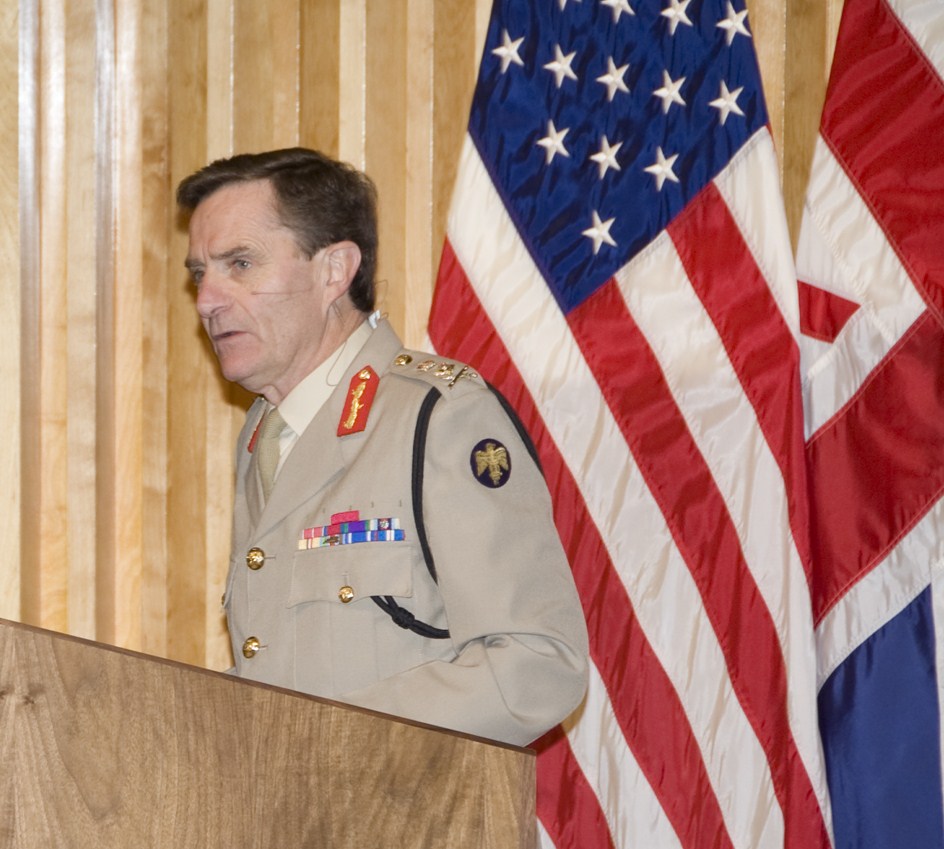|
Commander Regional Forces (United Kingdom)
The Commander Regional Forces (CRF) was a senior British Army officer who had command over the ''Regenerative Divisions'' of the British Army i.e. those divisions that are not on full strength and would only be mobilised in a national emergency. The post was held by a lieutenant general and was based at HQ Land Forces. The post holder was also Inspector-General of the Territorial Army. Structure Regional Forces was established in 2003, under the LANDmark reorganisation. Commander Regional Forces is responsible for three regenerative Divisions ( 2nd Division, 4th Division and 5th Division), London District, and United Kingdom Support Command (Germany). In December 2009 it was announced that the responsibilities of the Commander Regional Forces (i.e. responsibility for support) would be subsumed within those of the Adjutant-General to the Forces The Adjutant-General to the Forces, commonly just referred to as the Adjutant-General (AG), was for just over 250 years one of the mo ... [...More Info...] [...Related Items...] OR: [Wikipedia] [Google] [Baidu] |
British Army
The British Army is the principal land warfare force of the United Kingdom, a part of the British Armed Forces along with the Royal Navy and the Royal Air Force. , the British Army comprises 79,380 regular full-time personnel, 4,090 Gurkhas, and 28,330 volunteer reserve personnel. The modern British Army traces back to 1707, with antecedents in the English Army and Scots Army that were created during the Restoration in 1660. The term ''British Army'' was adopted in 1707 after the Acts of Union between England and Scotland. Members of the British Army swear allegiance to the monarch as their commander-in-chief, but the Bill of Rights of 1689 and Claim of Right Act 1689 require parliamentary consent for the Crown to maintain a peacetime standing army. Therefore, Parliament approves the army by passing an Armed Forces Act at least once every five years. The army is administered by the Ministry of Defence and commanded by the Chief of the General Staff. The Brit ... [...More Info...] [...Related Items...] OR: [Wikipedia] [Google] [Baidu] |
Lieutenant General (United Kingdom)
Lieutenant general (Lt Gen), formerly more commonly lieutenant-general, is a senior rank in the British Army and the Royal Marines. It is the equivalent of a multinational three-star rank; some British lieutenant generals sometimes wear three-star insignia, in addition to their standard insignia, when on multinational operations. Lieutenant general is a superior rank to major general, but subordinate to a (full) general. The rank has a NATO rank code of OF-8, equivalent to a vice-admiral in the Royal Navy and an air marshal in the Royal Air Force (RAF) and the air forces of many Commonwealth countries. The rank insignia for both the Army and the Royal Marines is a crown over a crossed sabre and baton. Since the coronation of Queen Elizabeth II, the St Edward's Crown, commonly known as the Queen's Crown, has been depicted. Before 1953, the Tudor Crown, commonly known as the King's Crown, was used. British Army usage Ordinarily, lieutenant general is the rank held by the o ... [...More Info...] [...Related Items...] OR: [Wikipedia] [Google] [Baidu] |
Commander Land Forces
Commander-in-Chief, Land Forces (CINCLAND), was a senior officer in the British Army. CINCLAND commanded HQ Land Forces, an administrative apparatus that had responsibility for all of the army's fighting units in the United Kingdom (excluding Northern Ireland), Germany and Brunei, together with training garrisons in Nepal, Belize, Canada and Kenya. CINCLAND was also the Standing Joint Commander (UK) (SJC (UK)), with responsibility for the provision of Military Aid to the Civil Power within the United Kingdom. The position had existed since 1968, when it was known as General Officer Commanding Army Strategic Command. In 1972 it became Commander-in-Chief United Kingdom Land Forces (CINCUKLF). As from 1 April 2008, HQ Land Command was renamed HQ Land Forces (HQLF). Therefore, the Commander-in-Chief became Commander-in-Chief of HQ Land Forces. CINCLAND headed the Commanders-in-Chief Committee, a body established for contingency planning purposes. The post changed to a three-star posi ... [...More Info...] [...Related Items...] OR: [Wikipedia] [Google] [Baidu] |
Territorial Army (United Kingdom)
The Army Reserve is the active-duty volunteer reserve force of the British Army. It is separate from the Regular Reserve whose members are ex-Regular personnel who retain a statutory liability for service. The Army Reserve was known as the Territorial Force from 1908 to 1921, the Territorial Army (TA) from 1921 to 1967, the Territorial and Army Volunteer Reserve (TAVR) from 1967 to 1979, and again the Territorial Army (TA) from 1979 to 2014. The Army Reserve was created as the Territorial Force in 1908 by the Secretary of State for War, Richard Haldane, when the Territorial and Reserve Forces Act 1907 combined the previously civilian-administered Volunteer Force, with the mounted Yeomanry (at the same time the Militia was renamed the Special Reserve). Haldane planned a volunteer "Territorial Force", to provide a second line for the six divisions of the Expeditionary Force which he was establishing as the centerpiece of the Regular Army. The Territorial Force was to be comp ... [...More Info...] [...Related Items...] OR: [Wikipedia] [Google] [Baidu] |
2nd Infantry Division (United Kingdom)
The 2nd Infantry Division was an infantry division of the British Army that was formed and disestablished numerous times between 1809 and 2012. It was raised by Lieutenant-General Arthur Wellesley for service in the Peninsular War (part of the Coalition Wars of the Napoleonic Wars) as the 2nd Division. It was disestablished in 1814, but re-formed the following year for service in the War of the Seventh Coalition. The formation fought at the Battle of Waterloo and played an important role in defeating the final French attack of the day. It then marched into France and became part of the Army of Occupation, and was the only British force allowed to march through Paris. In December 1818, the division was disbanded once again. During the mid- to late-19th century, several formations bearing the name 2nd Division were formed. Only two such were considered part of the division's lineage by Everard Wyrall, who compiled its First World War history. The first was created in 1854 to ... [...More Info...] [...Related Items...] OR: [Wikipedia] [Google] [Baidu] |
4th Infantry Division (United Kingdom)
The 4th Infantry Division was a regular infantry division of the British Army with a very long history, seeing active service in the Peninsular War, the Crimean War, the First World War, and during the Second World War. It was disbanded after the war and reformed in the 1950s as an armoured formation before being disbanded and reformed again and finally disbanded on 1 January 2012. Napoleonic Wars The 4th Division was originally formed in 1809 by Arthur Wellesley, 1st Duke of Wellington, as part of the Anglo-Portuguese Army, for service in the Peninsular War. It fought in the Battles of Talavera, Salamanca, Roncesvalles, Vitoria, the Pyrenees, Orthez, and Toulouse, and the siege of Badajoz. Peninsular War order of battle The order of battle from January 1812 was as follows: Major General Sir Charles Colville (to April 1812) Major General Lowry Cole (from June 1812) * 1st Brigade: Major General James Kemmis ** 3/27th (Inniskilling) Regiment of Foot ** 1/40th (2nd Somersets ... [...More Info...] [...Related Items...] OR: [Wikipedia] [Google] [Baidu] |
5th Infantry Division (United Kingdom)
The 5th Infantry Division was a regular army infantry division of the British Army. It was established by Arthur Wellesley, 1st Duke of Wellington for service in the Peninsular War, as part of the Anglo-Portuguese Army, and was active for most of the period since, including the First World War and the Second World War and was disbanded soon after. The division was reformed in 1995 as an administrative division covering Wales and the English regions of West Midlands, East Midlands and East. Its headquarters were in Shrewsbury. It was disbanded on 1 April 2012. Peninsular War The 5th Division during the Peninsular War under the command of General James Leith was present at most of the major engagements including the Battle of Bussaco, the Battle of Sabugal, the Siege of Almeida, the Battle of Badajoz, the Battle of Salamanca, the Battle of Vitoria, the Siege of San Sebastian, the Battle of Nivelle and the Battle of the Nive. Peninsular War order of battle The order of battl ... [...More Info...] [...Related Items...] OR: [Wikipedia] [Google] [Baidu] |
London District (British Army)
London District (LONDIST) is the name given by the British Army to the area of operations encompassing the Greater London area. It was established in 1870 as ''Home District''. History In January 1876 a ‘Mobilization Scheme for the forces in Great Britain and Ireland’ was published, with the ‘Active Army’ divided into eight army corps based on the District Commands. 3rd Corps was to be formed within London District, based in Croydon. This scheme disappeared in 1881, when the districts were retitled ‘District Commands. It was re-formed in 1905 as ''London District'' to be an independent district within the larger command structure of the army, and has remained so ever since. In 1906, when the Chief of the General Staff moved to the Old War Office Building, HQ London District moved to Horse Guards.Tabor, p. 19 In September 1939, the district included the 1st and 2nd London Divisions, the 22nd Armoured Brigade, the Life Guards and Royal Horse Guards and five Guards ... [...More Info...] [...Related Items...] OR: [Wikipedia] [Google] [Baidu] |
United Kingdom Support Command (Germany)
United may refer to: Places * United, Pennsylvania, an unincorporated community * United, West Virginia, an unincorporated community Arts and entertainment Films * ''United'' (2003 film), a Norwegian film * ''United'' (2011 film), a BBC Two film Literature * ''United!'' (novel), a 1973 children's novel by Michael Hardcastle Music * United (band), Japanese thrash metal band formed in 1981 Albums * ''United'' (Commodores album), 1986 * ''United'' (Dream Evil album), 2006 * ''United'' (Marvin Gaye and Tammi Terrell album), 1967 * ''United'' (Marian Gold album), 1996 * ''United'' (Phoenix album), 2000 * ''United'' (Woody Shaw album), 1981 Songs * "United" (Judas Priest song), 1980 * "United" (Prince Ital Joe and Marky Mark song), 1994 * "United" (Robbie Williams song), 2000 * "United", a song by Danish duo Nik & Jay featuring Lisa Rowe Television * ''United'' (TV series), a 1990 BBC Two documentary series * ''United!'', a soap opera that aired on BBC One from 1965-19 ... [...More Info...] [...Related Items...] OR: [Wikipedia] [Google] [Baidu] |
Adjutant-General To The Forces
The Adjutant-General to the Forces, commonly just referred to as the Adjutant-General (AG), was for just over 250 years one of the most senior officers in the British Army. The AG was latterly responsible for developing the Army's personnel policies and supporting its people.Army conducts Top Level Organisational Review Defence News, 9 December 2009 The Adjutant-General usually held the rank of or . Despite his administrativ ... [...More Info...] [...Related Items...] OR: [Wikipedia] [Google] [Baidu] |
John Kiszely
Lieutenant General Sir John Panton Kiszely, (born 2 April 1948) is a retired senior British Army officer who was director general of the Defence Academy of the United Kingdom from 2005 to 2008. He is a former national president of The Royal British Legion. Early life The son of Dr John Kiszely and Mrs Kiszely, Kiszely was educated at Marlborough College and the Royal Military Academy Sandhurst before being commissioned into the Scots Guards as a second lieutenant on 20 December 1968. Military career Kiszely served with the regiment as a platoon commander, company commander and commanding officer in Great Britain, Northern Ireland, Germany, Cyprus and the Falkland Islands.Oxford Leverhulme Biography Kiszely was awarded the |
John McColl (British Army Officer)
General Sir John Chalmers McColl, (born 17 April 1952) is a retired senior British Army officer and a past Lieutenant Governor of Jersey. McColl previously served as Deputy Supreme Allied Commander Europe from 2007 to 2011. Army career Educated at Culford School in Suffolk, England, McColl was commissioned as a second lieutenant in the Royal Anglian Regiment in 1973 and promoted to lieutenant on 8 September 1974. He was promoted to captain on 8 March 1979 and to major on 30 September 1984. In 1989, he became a squadron commander in the 3rd Royal Tank Regiment, was promoted to lieutenant colonel on 30 June 1990, and to acting colonel shortly after. He was promoted to colonel on 30 June 1995 and to brigadier on 31 December 1996 (seniority 30 June). He held a variety of commands and military posts before commanding 1st Mechanised Brigade in 1997. In 1999, he became Assistant Chief of Staff at Land Command and in 2000, he was given command of 3rd (UK) Mechanised Division. In 2001, ... [...More Info...] [...Related Items...] OR: [Wikipedia] [Google] [Baidu] |



